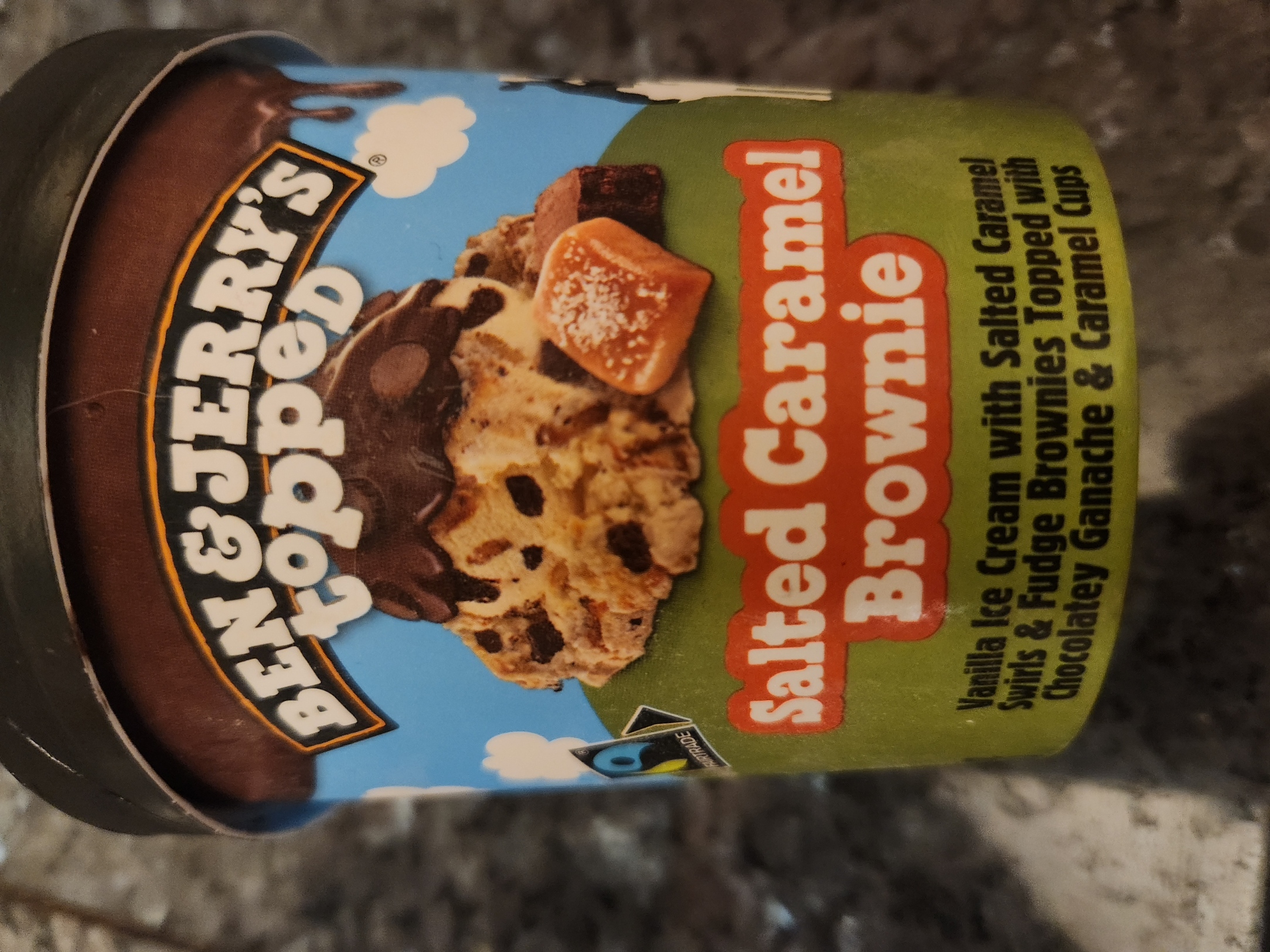
You know you’re suitably paranoid about the potential for confusion in contract language if you spot instances of that sort of confusion in your everyday life.
Yesterday I was in urgent need of ice-cream therapy, so I got me a pint of the Ben & Jerry’s flavor (previously unknown to me) called “Salted Caramel Brownie.”
Here’s the fine-print description:
Vanilla Ice Cream with Salted Caramel Swirls & Fudge Brownies Topped with Chocolatey Ganache & Caramel Cups
Before I could stuff the ice cream in my face, I had an urgent issue to attend to: Did the modifier Topped with Chocolatey Ganache modify just Fudge Brownies? In other words, did only the brownies have the benefit of that topping? Or did the salted caramel swirls also get a share of that topping? Or was it the vanilla ice cream (including the swirls and brownies) that was so topped?
Ripping off the lid revealed that the last of those three interpretations was the one that applied. I feel for those crestfallen souls who had been so looking forward to the fudge brownies (or the fudge brownies and the salted caramel swirls) being the only things topped.
But the chaos didn’t end there! What about the caramel cups? Were they just another feature of the ice cream, equivalent to the swirls and the brownies? Or were they part of the topping!
Ladies and gentlemen, they were part of the topping.
By the time I was face to face with the contents of the tub, I was so roiled by semantic turbulence that I had no option but to eat the entire thing.
(The kind of confusion on display here is syntactic ambiguity, which arises principally out of the order in which words and phrases appear and how they relate to each other grammatically. Click here for a bunch of posts on this blog exploring contract examples of syntactic ambiguity.)

“Topping” means “killing.” It also means “excellent; fine.” So a “topping topping” would be a fine killing. Hope that clears things up.